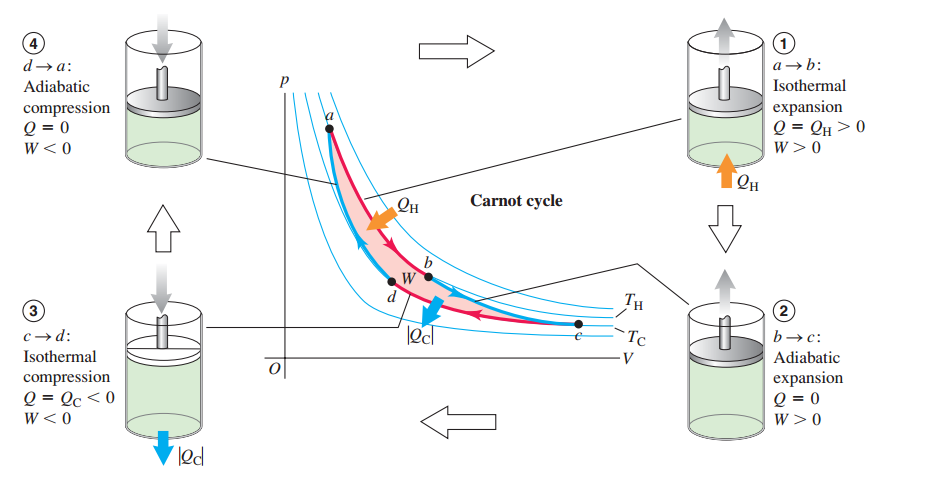Thermodynamics
Two moles of an ideal gas at temperature 3 0 0 K was cooled isochorically so that the pressure was reduced to half. Then in an isobaric process the gas expanded till the temperature got back to initial value.
Find the amount of heat absorbed by the gas in the entire process.
Consider the value of gas constant to be 8 . 3 mol × K J .

This section requires Javascript.
You are seeing this because something didn't load right. We suggest you, (a) try
refreshing the page, (b) enabling javascript if it is disabled on your browser and,
finally, (c)
loading the
non-javascript version of this page
. We're sorry about the hassle.
2 solutions
In the second process, why gas has not done work=PdV due to change of volume?
Log in to reply
No value for any value is provided ... You cannot assume any value .. And pdV=nRdT you can use both the equation but at the same time you have to consider the information provided as well... Moreover you have been asked for Q not the work done
Let T 1 = 3 0 0 k
For an ideal gas at constant volume,
P
α
T
T
2
=
T
2
T
1
P
2
=
1
5
0
K
d
T
=
1
5
0
−
3
0
0
=
−
1
5
0
K
Using first law of thermodynamics ,
Δ
Q
=
d
U
+
Δ
W
During the isochoric process,
Δ
W
=
0
&
d
U
=
n
C
v
d
T
.
Δ
Q
1
=
n
C
v
d
T
+
0
During the isobaric process, the gas is brought to the initial state.
d
T
2
=
3
0
0
−
1
5
0
=
1
5
0
K
=
−
d
T
Δ
Q
2
=
−
n
C
v
d
T
+
P
Δ
V
Δ
Q
=
Δ
Q
1
+
Δ
Q
2
.
Δ
Q
=
n
C
v
d
T
−
n
C
v
d
T
+
P
Δ
V
∴
Δ
Q
=
P
Δ
V
For an ideal gas,
P
Δ
V
=
n
R
Δ
T
=
n
R
d
T
2
∴
Δ
Q
=
n
R
(
3
0
0
−
1
5
0
)
=
2
×
8
.
3
×
1
5
0
=
2
4
9
0
J
For the isochoric process, since volume is constant Pressure ∝ Temperature . Final temperature will be half of the initial temperature: Δ T = 2 − 3 0 0 Δ Q = n C V Δ T = − 3 0 0 C V For isobaric process: Δ T = 3 0 0 − 2 3 0 0 = 2 3 0 0 Δ Q = n C P Δ T = 2 × 2 3 0 0 × ( C V + R ) = 3 0 0 C V + 3 0 0 R
Total: Δ Q total = − 3 0 0 C V + 3 0 0 C V + 3 0 0 R = 3 0 0 R .